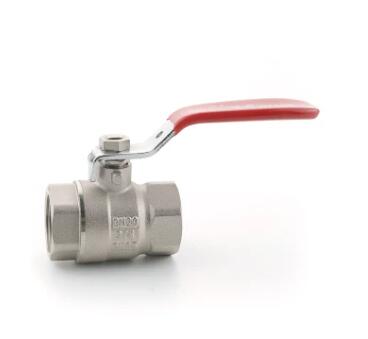Unveiling the Mechanics: Materials Behind the Strength of Ball Valves
2023-12-02
Introduction:
In the intricate world of fluid control systems, ball valves stand out as robust and efficient components. Central to their reliability and performance are the materials from which they are crafted. These materials determine the valve's durability, resistance to corrosion, and suitability for various applications. Join us as we delve into the diverse materials commonly used in the construction of ball valves, exploring the strengths and applications of each.
1. Stainless Steel: The Epitome of Durability
Stainless steel, renowned for its corrosion resistance and strength, is a popular choice for ball valve construction. Both 316 and 304 stainless steel variations are commonly used. 316 stainless steel, with its higher corrosion resistance, is particularly favored in applications where exposure to harsh chemicals or corrosive environments is a concern. Ball valves made from stainless steel are well-suited for a wide range of industries, including chemical processing, oil and gas, and water treatment.
2. Brass: Balancing Strength and Cost-Effectiveness
Brass, a copper alloy containing zinc, is another common material for ball valves. Known for its excellent machinability and corrosion resistance, brass ball valves strike a balance between strength and cost-effectiveness. They are often used in residential and commercial plumbing applications, as well as in industries where moderate corrosion resistance is sufficient.
3. Bronze: Ideal for Seawater and Marine Applications
Bronze, an alloy of copper and tin, is prized for its resistance to corrosion, especially in seawater environments. Ball valves made from bronze find applications in marine settings, shipbuilding, and offshore industries. The alloy's durability and ability to withstand harsh conditions make it a reliable choice for saltwater applications.
4. PVC (Polyvinyl Chloride): Lightweight and Chemical-Resistant
In applications where weight is a crucial factor and chemical resistance is required, ball valves made from PVC come into play. PVC ball valves are lightweight, cost-effective, and offer excellent chemical resistance. They are commonly used in water treatment, irrigation, and chemical processing where the presence of corrosive substances necessitates a resilient material.
5. CPVC (Chlorinated Polyvinyl Chloride): Elevated Temperature Resistance
For applications that involve elevated temperatures, CPVC ball valves are the material of choice. With enhanced heat resistance compared to traditional PVC, CPVC valves find applications in hot water systems, industrial processes, and chemical handling where exposure to higher temperatures is a consideration.
6. Carbon Steel: Robust Strength for Industrial Environments
In heavy-duty industrial applications, where strength and durability are paramount, carbon steel ball valves are a preferred choice. These valves exhibit exceptional toughness and resistance to wear, making them suitable for applications in oil refineries, power plants, and other industrial settings where harsh conditions are commonplace.
Conclusion: Crafting Reliability, One Material at a Time
The diversity of materials used in the construction of ball valves underscores the importance of selecting the right material for the intended application. Each material brings its unique set of properties to the table, addressing specific challenges and demands in fluid control systems. Whether it's the corrosion resistance of stainless steel, the versatility of PVC, or the strength of carbon steel, the materials behind ball valves play a crucial role in ensuring the reliability and efficiency of fluid handling across various industries.



